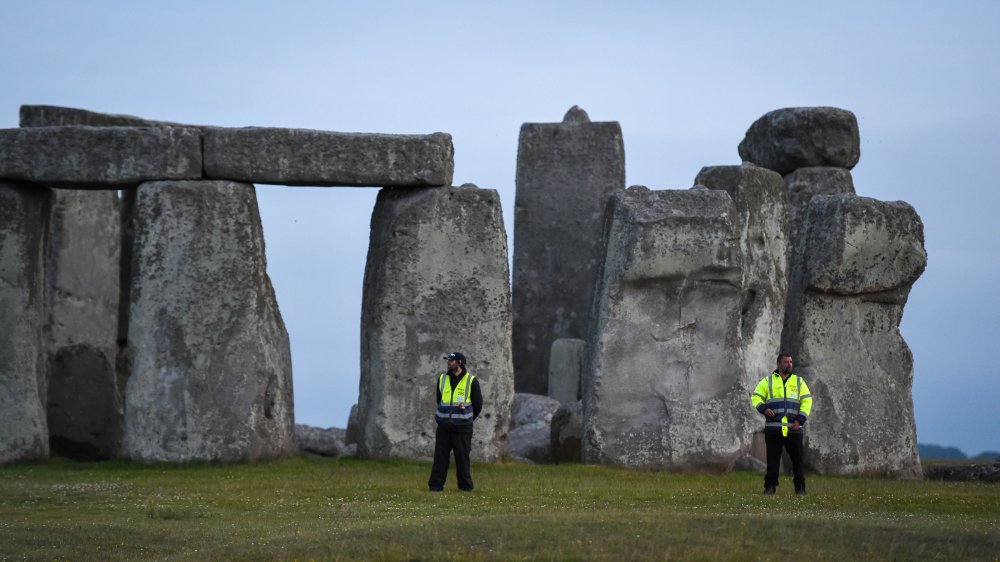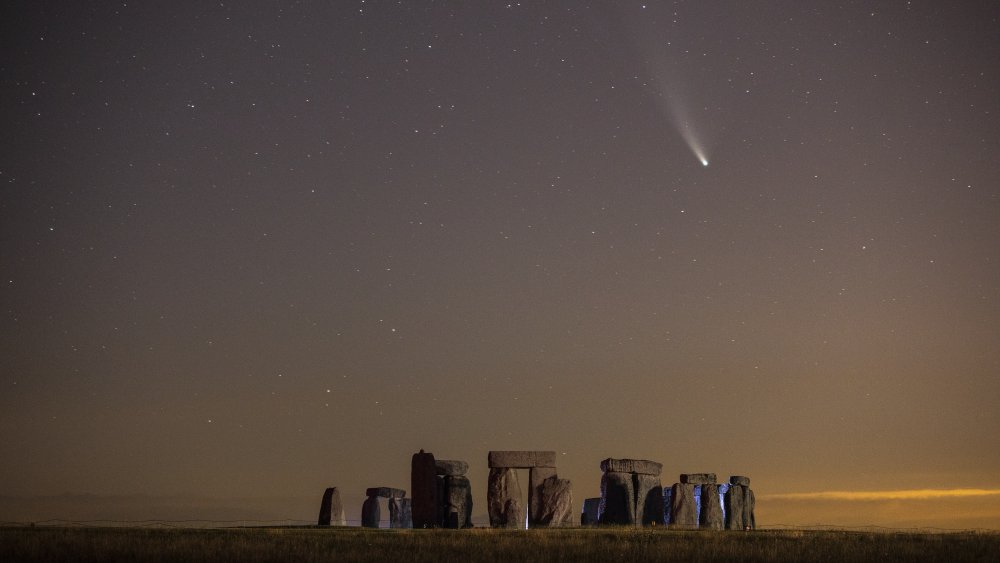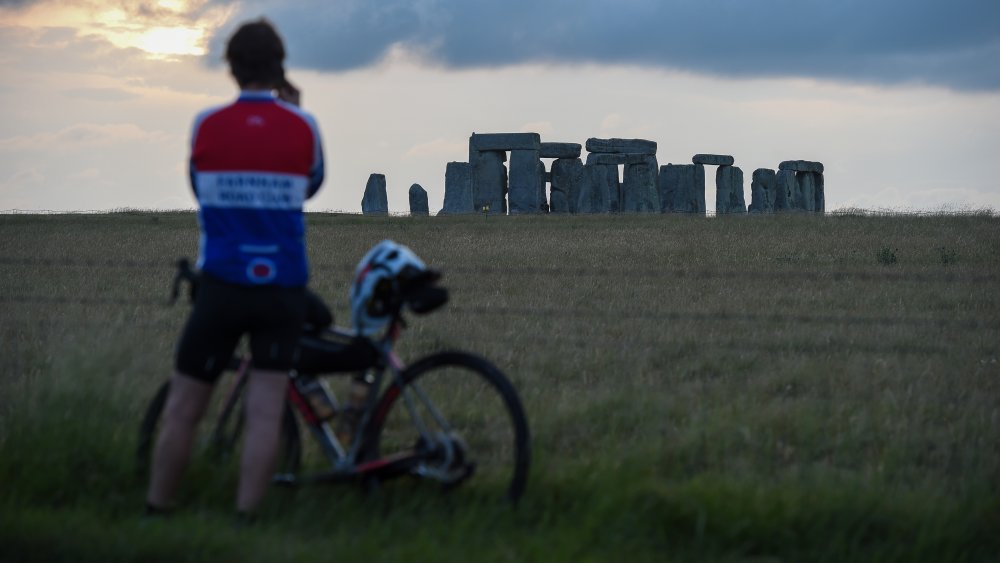Origin Of Stonehenge's Sarsen Stones Uncovered
Weighing 20 tons and standing over sixty feet tall, the sarsens that form Stonehenge's main enclosure have inspired many questions, like Ylvis's "Stonehenge." This week, however, one of the major mysteries that have been plaguing scholars has been solved: the sarsen stones' origin.
On their website, English Heritage, a charity that manages over 400 places, reported geomorphologist Professor David Nash had published a paper in collaboration with English Heritage that used the chemical composition of the stones to examine possible places of origin. 50 out of the 52 sarsens, a type of sandstone block found in England, shared the same chemical composition, meaning they came from the same location. From the same data, the team managed to pinpoint the place the builders sourced their blocks: West Woods, on the edge of Wiltshire's Marlborough Downs — a forty-ish minute drive north from Stonehenge.
Lower in the statement, Susan Greaney, English Heritage Senior Properties Historian and member of the team, explained what more about Stonehenge this sourcing location tells us: "We can now say, when sourcing the sarsens, the over-riding [sic] objective was size – they wanted the biggest, most substantial stones they could find and it made sense to get them from as nearby as possible... Yet again this evidence highlights just how carefully considered and deliberate the building of this phase of Stonehenge was." However, this now lays out yet more questions, namely what route the druids took to get the stone across the 25 kilometers.
A side mystery
To gain a full view of the sarsen stone, however, the team needed an interior piece of the prehistoric stone. Fortunately, a core fell into their lap.
In 1958, a restoration team descended upon Stonehenge. As Ars Technica explains, in the centuries since Stonehenge's initial erection, one of the trilithons, the post and lintel constructions, fell in the 18th century, but before they could restore the top horizontal stone, the team noticed that one of the standing sarsens had a massive crack in it. This stone, called Stone 58, needed urgent fixing. So they drilled into it and inserted metal ties. After the project finished, however, the interior pieces, the cores, disappeared.
That is, they all disappeared until 2019, when Mr. Robert Philips, one of the members of the restoration team, had his core returned to the United Kingdom from Florida. In Ars Technica's article, a second core is claimed to have turned up in Salisbury Museum. The third remains missing.
Stonehenge's mystery continues
Still, the mysteries of Stonehenge continue, the most obvious after reading English Heritages announcement being the origin of the two stones not from West Woods. In Science Advances, the journal that published their findings, the team notes that the two odd stones also occupy the northernmost points of the construction. From this they theorize that maybe a different community of builders contributed these two stones.
It also raises a question about the rationale behind the use of Welsh bluestone, the smaller stones that form the interior of Stonehenge. Greaney suggests in the release that "a sacred connection to these mountains perhaps" was at play — though they'd have to be really sacred to justify the transportation of these stones across distances much larger than the sarsens. However, in 2011, researchers from the University of Leicester found evidence that gave "a massive boost" to the theory that glaciers did most of the actual transportation, meaning that the builders of Stonehenge were more opportunistic in their buildings than Herzog-like auteurs driving after a divine image. As the paper in Science Advances notes though, with so many stones missing and us occupying such a distant position from its construction, we can try to puzzle out the mystery, but we will probably never completely solve it.


